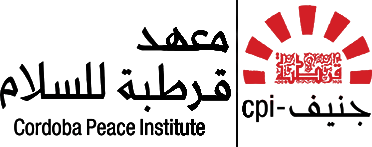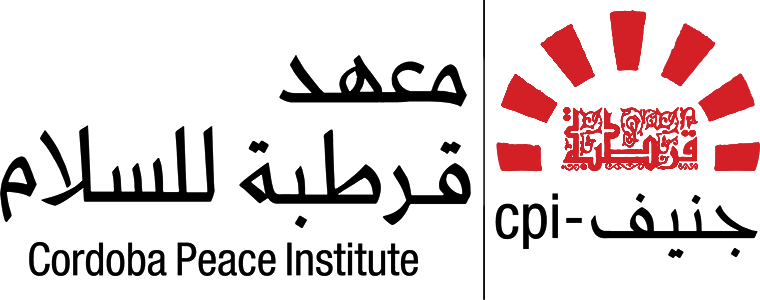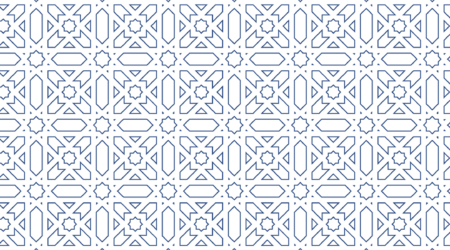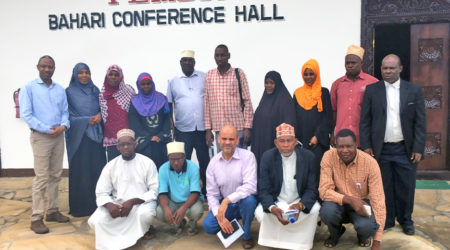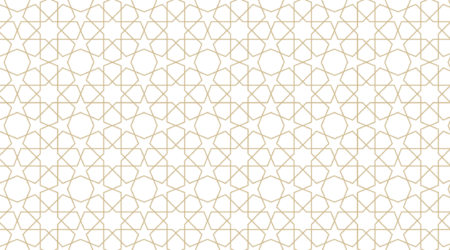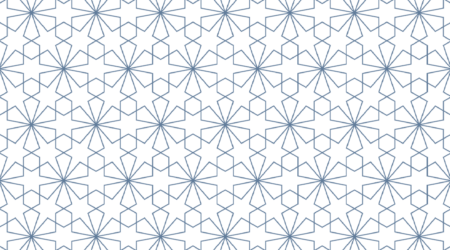The Cordoba Update, November – December 2017

Dear Reader,
2017 is drawing to a close. During the past twelve months, the violence in Syria, Iraq, Yemen, Libya and elsewhere in the world has caused the death of tens of thousands of citizens, unbearable living conditions for tens of millions, and the complete destruction of entire cities such as Aleppo and Mosul. If 2017 has seen a decline of the “Islamic State” organisation, deep-rooted causes of extremism and conditions ripe for the spread of violence are sadly still in place. Unfortunately, so many unresolved conflicts and untreated traumas augur the continuation of this violence.
The Cordoba Foundation of Geneva (CFG) has had a busy programme throughout MENA and the Sahel, and we thank our donors for their support, which is so precious in these difficult times. Our team continues its engagement for peace on a daily basis, working to encourage dialogue in difficult circumstances marked by ideological, sectarian or ethnic polarisation.
In this “Cordoba Update” you will find two main contributions: Lakhdar Ghettas has written an analysis of the situation in Tunisia, seven years on from the start of the 2010-2011 revolution, while Aurélien Joly gives an account of the round-table jointly organised by the CFG as part of Geneva Peace Week 2017, on the role of religious actors in the prevention of violence and promotion of peace, one of the principal themes in which the CFG is engaged.
We hope that 2018 will bring peace and stability, and we wish you much joy in this festive season.

News of the Foundation
Past Events
The Middle East Platform III – “Promoting Social Cohesion and Interaction through the Notion of Citizenship”, October 2017: https://goo.gl/xAPcpg
Discussion panel – “Religion – a Source of Conflict or a Path to Peace? The Role of Religion in Preventing Violence”, Geneva Peace Week, November 2017: https://goo.gl/AiYNaf
Cordoba in the media
Istanbul Workshop II – Lebanese and Iraqi initiatives for reconciliation and dialogue on regional crises.
arabi21.com: ورشة اسطنبول 2: مبادرات لبنانية وعراقية للمصالحة وحوار عن ازمات المنطقة
The « Humanitarian Charities Forum » distribute food rations in Al-Hikma camp, Beqaa, Lebanon.
Janoubia: «ملتقى الجمعيات الإنسانية» يوزّع حصصا غذائية في مركز إيواء «الحكمة»
Al-Watan Voice: ملتقى الجمعيات الانسانية يوزع حصصا غذائية في مخيم الحكمة
CFG: First joint activity of the Humanitarian Charities Forum since its launch in August 2017
The “professional media” investigates mechanisms for the protection of journalists and media institutions.
Al-Sharq: “الإعلام المهني” تبحث آليات حماية الصحفيين والمؤسسات الإعلامية
Geneva Peace Week panel explores role of religion in preventing violence
Ekklesia: Geneva Peace Week panel explores role of religion in preventing violence
European initiatives for Islamic reform; why, and to what end?
Middle East Monitor: European initiatives for Islamic reform; why, and to what end?
The Cordoba Foundation of Geneva – 15 years of Peace Promotion (2002-2017)
Klvin Mag: The Cordoba Foundation of Geneva, 15 years of Peace Promotion and Mediation
 |
North AfricaThe Tunisian Revolution Seven Years Onby Lakhdar Ghettas |
Thirty years this November
Zine el Abidine Ben Ali assumed power in Tunisia ending thereby the rule of ailing Habib Bourguiba who ruled the country since its independence in 1956. Ben Ali promised political reforms that lured large segments of the Tunisian polity, including the Islamists. Those hopes were soon shattered by the brutal crackdown following the 1989 general elections in which Ennahdha ran on independent lists, and came second after Ben Ali’s RCD party. Leftists were not spared either and by 2010 Ben Ali managed to unite most Tunisians against his authoritarian rule. Tunisians embarked on a political transition that has been underway seven years now. Dubbed the Arab Spring’s exception, a number of explanations have been put forward by different analysts. There is the role of a vibrant civil society, high levels of education, the homogenous fabric of the Tunisian society, and the limited geostrategic interests. One important factor, however, is experiences of dialogue and coalition building among political and civil society actors of different worldviews, especially between secular leftists and Islamists. Those involved in the 18 October 2005 dialogue initiative rightly argue that the outcome of that experience facilitated reaching the agreement on which the 2012 Troika government was formed.
Political transitions following bottom up upheavals are very difficult to navigate in that they bring to the surface all the contradictions that were suppressed by the authoritarian regime. It was inevitable that the Troika government would hit stubborn obstacles that threatened the entire democratic change. In addition to the old ideological battles among Islamists and secularists, the 2011 uprising allowed the emergence of the Salafi voice as a new political actor that attracted sizable segments of Tunisian youth. The 2013-14 national dialogue managed to ensure a minimal consensus on issues that blocked drafting of a new constitution in the 2011 Constituent Assembly. Yet, key issues were either avoided or formulated in vague language. Besides, the participative Salafi voice was not formally present at the negotiation table between Ennahdha and its political adversaries led by Nidaa Tounes. This reality could explain to some extent the bloody political violence during the first months of the post-Troika era, under Habib Essid’s 2015 government. The international Community hailed the 2014 constitution as unique in the Arab world and the Quartet that convened the dialogue was rewarded by a Nobile Prize for peace.
As Tunisians embarked on a fresh start led this time by Nidaa Tounes high hopes were nurtured by the media campaign that supported Nida Tounes and its electoral promises. The reality was, however, more complex than defeating Ennahdha in elections as Nida learned as the party set off to form its government. President Beji Caid Essebsi witnessed the emergence of differences that tore apart the secularists’ alliance against Ennahdha. Essebsi understood he needed Ennahdha in the government if it were not going to play the shadow government role in the parliament. This decision shattered the secularists’ 2014 alliance and pushed the Popular Front into the opposition. Soon after, Nidaa Tounes as well started to disintegrate due to a combination of party leadership struggle thinly disguised as political orientation differences. Current and former figures of Nidaa Tounes disagree on the assessment of this episode. Some evoke the 2013 Paris Consensus between Essebsi and Rached Ghannouchi, others explain it by a genuine commitment on the part of President Essebsi to rise above narrow partisan politics and act in the ultimate national interest, as any statesman should do, especially during historical junctions of the country.
The Nidaa-Ennahdha coalition has so far survived three years. Ennahdha has become the first political force in the parliament following the string of splits in Nidaa party and its parliamentary bloc. This reality that was unthinkable hereto has shaken the Tunisian civil and political landscape and forced shifts in alliances. While the leadership of the two political parties are busy conceptualising ways to institutionalise the coalition for it to hold for the next decade, other secularist political groups have been repeatedly trying to form new fronts in order to undo the coalition. The rank and file of Nidaa-Ennahdha are not however completely in tune with their respective leaders. Segments of Ennahdha youth, especially in the south have not yet swallowed this shift of alliance from former ally Moncef Merzouki, to Ennahdha’s Bourguibism foe Essensi. The same applies for Nidaa’s youth who were recruited and mobilised on an anti-Islamist platform but are now told to make peace with Ennahdha. Some figures in the opposition think this coalition of the “Big Two” is killing the spirit of pluralism and fair political play. Some even think that it would ultimately produce the same conditions that fuelled the 2011 uprising.
Analysts and Tunisian pollical figures offer diverging assessment on the transition strategy. Some argue that holding local elections first could have spared Tunisia all the political violence and economic hardship it has suffered over the last seven years. They argue the root causes of the uprising that began in the marginalised inland regions has not been addressed seven years on; which explains the recurring unrest throughout those regions. The debate around the economic reconciliation project defended by Ennahdha and Essebsi has to some extent shifted the traditional ideological fault lines in favour of new rapprochement among Islamist and leftist youth who all oppose the law that they consider a license for impunity.
Seven years on, one can dissect four main conflict issues in Tunisia today. First, the issue of the coalition of Nidaa Tounes and Ennahda. Second, the nature of the political system. Third, the political role of the UGTT labour union; and finally, the urgency or not of holding the local elections. These represent the main obstacles to the democratic transition in Tunisia but there are other aspects of the transition that contribute to the social unrest other than the economic hardship. A great deal remains to be done in term of dealing with the past. The Truth and Dignity Commission has embarked on a promising journey but there is no consensus on its mandate and role among the Tunisian polity. The Islamist-secularist ideological divide continues to underpin the political debate in the country, the latest episode being President Essebsi’s call to reform the inheritance law in order to promote equal sharing between all citizens in a civic state as the country’s constitution stipulates.
Coalition of the Big Two:
Nidaa Tounes and Ennahda agree that their coalition based on the Paris consensus is vital for the success of the transition. Ennahdha even thinks that the coalition should be developed and institutionalised to devise a development strategy backed by the two parties in parliament and government, over the next five even ten years in order to consolidate the transition. Other parties, however, fear that this coalition of the Big Two will pave the way for the return to authoritarian rule. They are in favour of a consensual rule that is enlarged to all political actors (big and small, inside and outside the parliament). Two recent acts reflect these dynamics. Nidaa Tounes, Ennahdha and Slim Riahi’s UPL have backed a single candidate to preside the elections’ watchdog ISIE and voted for Mohamed Tlili Mansri in mid-November. The response came from Mohcen Merzouk’s El Houra bloc, the Democrats bloc by the formation of the Progressive Parliamentary Front. This new front’s stated objective is to “re-establish power balance in the parliamentary affairs and guarantee political stability”. But few weeks later the talk is about challenging the Nidaa-Ennahdha coalition in general.
Nature of the Political System:
There has been growing calls to review and amend the current hybrid political system that is semi-parliamentary / semi-presidential. Some in Nidaa Tounes think that in order to guarantee the ideal conditions possible for the success of the transition (re-vitalise the economy, and pass the necessary laws and policies), Tunisia needs an electoral law that brings about a majority party rule. They are not necessarily calling for amending the 2014 constitution, but they argue a reform of sorts should be undertaken. This unnerved the other small political parties who consider such a step would pave the way to the return of authoritarian rule. They argue that the institutions enacted by the 2014 constitution have not even been fully established yet to judge the sustainability of the constitution.
In Essebsi’s interview for the national Watania 1 TV on 18 September, he said he understands why some are calling for the reform of the hybrid system, and that although the current constitution allows him to take such an initiative, he nevertheless won’t take it. At the same time, he added, the parliament is free to launch such an initiative. In other words, he is leaving the door open. Politically, opponents of Ennahdha consider a presidential system would ensure the opponents of Ennahdha control of the presidency (last line of defence of secularists), since they are convinced Ennahdha will have the control of local, regional assemblies as it has the majority in parliament now. Ennahdha, however, is not clear on this issue. During the Troika years, Ennahdha first called for a parliamentary system (convinced of their popularity), but after the 2013 crisis the party agreed to the current hybrid system. Since the beginning of the coalition Nidaa-Ennahdha some advisers around Ghannouchi, such as Lotfi Zeitoun, have been on the offensive for a general reconciliation and a presidential system. The party’s Shura council is, however, divided. Some think if a reform of the system is on the agenda, then a parliamentary system should be Ennahdha’s choice not for partisan calculations but to prevent the return of the despotic practices of the presidential rule under which Islamists suffered most.
Political role of the labour union:
Figures of Nidaa Tounes and even some leftists have expressed strong disapproval of the political role of the labour union, UGTT. They consider that the labour union should cease exerting political pressure on the government and the political system (through the Popular Front). This is of course a thorny issue in Tunisia given the historical role the UGTT played in Tunisia’s independence struggle and state building since then. Besides, the labour union played a critical role in the downfall of Ben Ali’s regime as well as the Troika. It was crucial in the National Dialogue 2013-14. Since the temporary alliance between Nidaa Tounes and the PF fell apart because of the inclusion of Ennahdha in the 2015 government tensions have been growing to unprecedented levels, especially after that the PF / UGTT voted against the civil servants reconciliation law. In the above-mentioned interview President Essebsi openly and aggressively attacked Hamma Hammami, FP’s leader, in words with negative connotations. While the President could have opted for another word, he used the equivalent (Faasiq) that is religiously loaded. The interview stirred a polemic in mass media and social media.
No consensus on the urgency of holding the local election:
Disagreements on the urgency of local elections have resulted in postponing them to next spring 2018. Opponents of Ennahdha think that holding the local elections now is technically not feasible because the new local governance law is not ready to discuss and pass, and because the electoral body in charge of organising elections, ISIE, has just been fully staffed. In addition to these technical arguments, they argue that for voters mobilisation sake, budget savings, and to avoid electoral fatigue, it would be logical to combine the local elections with the upcoming regional elections sometime mid-2018. Ennahdha, however, considers those justifications are baseless and that the real reason other political parties have been dragging their feet is their fear that unlike other secularist parties Ennahdha is ready for elections, which would give it an advantage for the legislative and presidential elections in late 2019.
This disagreement is reflected in the parliament. Party blocs in the parliament have spent months before they could finally elect a president for ISIE, this November. Ennahdha fears that even the April date being floated by the opposition is not definite since there are calls to postpone them further and combine with regional elections, which is another dossier on the agenda next year. Meanwhile, there is growing frustration at local level and minor parties (who have nothing to lose) think that holding elections on time, regardless of partisan gain, is crucial for establishing the democratic culture during this founding phase of the second republic. Opponents of this group think that holding elections before arriving at a large consensus is more dangerous for the transition than postponing them.
(*) For more information on the North Africa Program, please contact Lakhdar Ghettas (lakhdar.ghettas@cordoue.ch)
{/slider}
 |
Geneva Peace WeekReligion – A Source of Conflict or the Path to Peace? The Role of Religion in Preventing Violence |
According to studies conducted by the Uppsala Conflict Data Program (UCDP), conflicts involving religious incompatibilities have seen a sharp increase, rising from only 2 percent in 1975 up to more than 50 percent in 2013. There are no exhaustive explanations for this change, yet the phenomenon can be approached by looking at the prevention work undertaken throughout the last 30 years. While conflicts not involving religious incompatibilities have been addressed through active preventative methods and tools, there has been a lack of understanding and suitable preventive measures concerning the challenges faced by conflicts where religious incompatibilities are present. Meanwhile, religious organisations are considered a rich source for peace promotion. Whether as legitimate local or international peace actors and mediators or as providers of humanitarian aid, religious institutions have a role to play in conflict resolution.
On November 8th 2017, the Cordoba Foundation of Geneva co-hosted a panel discussion on the Role of Religion in Preventing Violence, in partnership with the Network for Religious and Traditional Peacemakers (NRTP), the Peace Research Institute Oslo (PRIO), the Inclusive Peace and Transition Initiative (IPTI) and the World Council of Churches (WCC). This event was held in the context of Geneva Peace Week and the particular theme of this annual series of events was violence prevention. Among the panelists were Catherine Germond from the Cordoba Foundation of Geneva, Dr. Mohamed Elsanousi from the NRTP, Peter Prove from the WCC and Rev. Trond Bakkebvig from PRIO. The symposium was moderated by Thania Paffenholz from IPTI.
The following discussion is an extract from the cases presented by the panelists and the moderator, as well as members of the audience.
Religion is like an energy, explained Dr. Mohamed Elsanousi. It can be used for good or bad, peace or violence. Religion can promote and strengthen conflicts but it can also diffuse them. When political institutions fail or lose credibility, religion as a thorough and comprehensive social network plays a crucial role in preventing conflict and promoting peace. Therefore, the endeavor to promote enduring peace without including religious leaders is a rather fruitless enterprise. Peace promotion requires the inclusion of religious leaders in order to endorse the sustainability and inclusiveness of peace processes.
In addressing the role of religion and its relationship with conflict and peace, a distinction must first be made between religion and religious actors in order not to make sweeping assumptions, and therefore remain analytical. Religious actors are at the forefront of peace and conflict in communicating specific interpretations of a religion. Moreover, as Dr. Thania Paffenholz explained, there is no such thing as a religious conflict in itself. Rather, religions are manipulated and instrumentalised in political conflicts and become politicised. Indeed, the instrumentalisation of religious actors in conflicts for political purposes has become a global phenomenon more and more prominent in the news. Consequently, a new frame of reference is emerging from a growing association between religion and conflict. Manipulation of religion for political outcomes can be seen in a wide range of examples, from extremism to the so called ‘Arab Spring’ during which religious issues were largely instrumentalised. Currently, this negative connotation between religion and conflict is largely attributed to Islam. As Dr. Mohamed Elsanousi explained, such a label of violence and extreme ideology imposed on Islam and Muslims is very unfortunate, as Islam teaches, supports and engages in precepts of peace. Specifically, Rev. Trond Bakkevig explained how there is no violent or peaceful religion, but only peaceful and violent religious actors and interpretations.
In order for religious actors to prevent and diffuse violent conflict correlated to religious ideology, Rev. Trond explained how religious leaders ought on the one hand to contextualise the teaching of their scripture in a relevant and engaging way; and on the other hand, need to rise above their own religion and include the narratives of other religions to create understanding and tolerance. Such behaviour can be manifested in the freedom of access and position of religious buildings, communicating a sense of broad inclusion. Conflict prevention starts with social cohesion, explained Catherine Germond, and the inclusion of women is crucial to reach such goal. This process has been clearly observed in a project run by the Cordoba Foundation of Geneva in Morocco on the alleviation of tensions between Secularists and Islamists, where Salafi women were asked to participate in the process. Secular participants were surprised and impressed when a Salafi woman asked if they wanted the conversation to be conducted in Arabic, English or French. Their prejudices towards Salafi women as backward and lacking of education were directly addressed, allowing new considerations to emerge. In adapting the framework of a project, a direct impact on prejudices within the community can be at the root of bettering social cohesion.
Moreover, Rev. Trond Bakkevig expressed the importance of acknowledging that every religion has a strain of violence in its own history. The Bible for example is full of ethnic cleansing. Consequently, one must first interrogate these scriptural acts of violence in order to find solutions for peace and reduce violence. Unfortunately, violent groups are very keen on using the violent trends of religious history and scripture to fuel their own agenda. Therefore, focusing on the tradition of violence of one’s own religion sets an agenda for that morality to be addressed within religious constituencies. Being aware of one’s own prejudices is necessary in order to deal with diversity and adversity. As Catherine Germond explained, it is often heard that certain communities are self-marginalised and do not want to be part of a mediation project. However, they should be asked anyway in order to check these assumptions and to find entry points and explore conditions to start the dialogue.
Peter Prove, Director of the Commission of the Churches on International Affairs at WCC, explained that effective and sustainable conflict and violence prevention is a long term project which can be greatly impacted by the inclusion of the younger generation. The more pluralistic a society becomes, the more defining one’s own identity becomes necessary. Finding an identity and a sense of belonging is particularly pivotal for young people turning increasingly towards secularism and questioning the legitimacy of their politicians. Furthermore, secularism should not be considered an anti-religious force, but an open place where religious and non-religious people could interact in a respectful and constructive way. On the religious side, many religious actors tend to deal in claims of truth and absolutist views. As a result, such claims contribute to fuelling conflicts and should be mitigated in order to create more space for dialogue. Inclusive dialogue will reduce conflict and violence in the same way that democratic nations tend not to go to war against each other. Young people joining ISIS are an example of the lack of such inclusion, as they are driven by the lack of a safe space and structure in their own community. Young people have a specific sense of purpose that they want to fulfil. Consequently, religious communities need to be proactive in providing young people with safer places to express themselves and to be taken seriously. As an illustration, Muslim actors have to answer difficult questions about identity and place attachment from young people. Dr. Mohamed Elsanousi explained how before the attack the Boston Marathon bomber Dzhokhar Tsarnaev stood up in a mosque and argued against the imam, who was praising Martin Luther King. Tsarnaev was expelled from his community and later joined ISIS, attracted by the fellowship it offered. This example shows where the path into radicalisation may start; it is driven by community. Radicalised young people may find a community in ISIS when they are excluded at home. This illustration demonstrates the potential of religious communities as the cause of both peace and violence. Therefore, religious programs of dialogue for the youth should be a priority, as youth hold the prospect for a peaceful future.
Dr. Thania Paffenholz reaffirmed how the problem of conflict is rooted in a common denominator of exclusion. Moreover, psychological effects such as feelings of helplessness, injustice and violation might add themselves to the perceived or real exclusion and significantly increase its damaging effect. It is therefore the responsibility of all different constituencies and religious leaders to be able to identify and consider such types of despair in order to find solutions and build a society brought together around common issues. In fact, it has been observed that the rise of social media technology is correlated with the rise of religious extremism. Consequently, bringing young people from different religions at a grassroots level to work on issues such as social media is an example of how new technologies and religion could prevent crucial violent issues and highlight a sense of belonging and participative inclusion. Indeed, social media are a good analogy to the problems faced by religion, as social media work as echo chambers created by algorithms based on our own prejudices. Consequently, inclusion itself is not enough but participative inclusion strengthens the feeling of inclusion and engages the youth. The new initiative called “Women-Friendly Mosque” launched in the UK in 2010 by Faith Matters is an example of inclusive participation encouraging religious dialogue based on five criteria: separate prayer space for women, services and activities for women (i.e. childcare and women’s training or mentoring sessions), an Imam accessible to women (or a woman scholar), inclusion of women in decision making and women holding office on the mosque committees. In conclusion, the potential for religion to be a positive factor in conflict prevention and peace promotion can be summarised in three main points. First, religious leaders, actors and constituencies need to perform a reflective inquiry into the tradition of violence embedded in their own religion before considering others. Secondly, a thorough work of inclusive participation especially with the youth must become a priority in order to defuse exclusion. Finally, a constant and widespread communication process on religious reflection, inclusion and participation should prevail as a showpiece for conflict prevention, resolution and resilience. Doing good and promoting peaceful behaviour is not enough. Extensive inclusive participation and communication on the subject matter must be undertaken in order to provide a counter-weight to toxic conversations, the spreading of violence and extremism.
{/slider}


